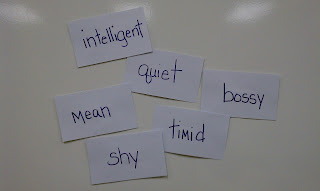Reading/ Comprehension of Informational Text/ Non-Fiction Students analyze, make inferences and draw conclusions about expository text and provide evidence from the text to support their understanding |
K | 1 | 2 | 3 | 4 | 5 |
10(D) use titles and illustrations to make predictions about text | 14(D) use text features (e.g. table of contents, index, headings) to locate specific information in text
| 13(D) use text features (e.g. bold print, captions, key words, italics) to locate specific information and make predictions about contents of text
| 11(D) use multiple features (e.g. guide words, topic and concluding sentences) to gain an overview of the contents of text and to locate information | Use multiple text features and graphics to gain an overview of the contents of text and to locate information |
use text features (e.g. table of contents, index, headings) to locate specific information in text
|
Activities:
Comprehention Toolkit Book 1- Lesson 2 Notice and Think about Nonfiction Text features
Comprehention Toolkit Book 1- Lesson 3 Explore Nonfiction Features
Resources in Tweety =
Text Feature Posters, Text Feature Matching Up activities
Anchor Activities:
Text Feature Activities found in tweety....
Triple Text Features Match Up
Find the Text Features
Nonfiction Topic Log
Informational Book Scavenger Hunt
Feature Purpose T-Chart
Write Your Own Nonfiction Book with Text Features
Text Features Match Up
Possible Test Questions:




